All the Queen’s horses: a royal love affair, from childhood ponies to Derby contenders
Her passion for all things equestrian, nurtured at an early age, has stayed with the Queen throughout her 70 years as monarch. Sean Smith tells the story of a natural horsewoman’s love of racing and its equine stars

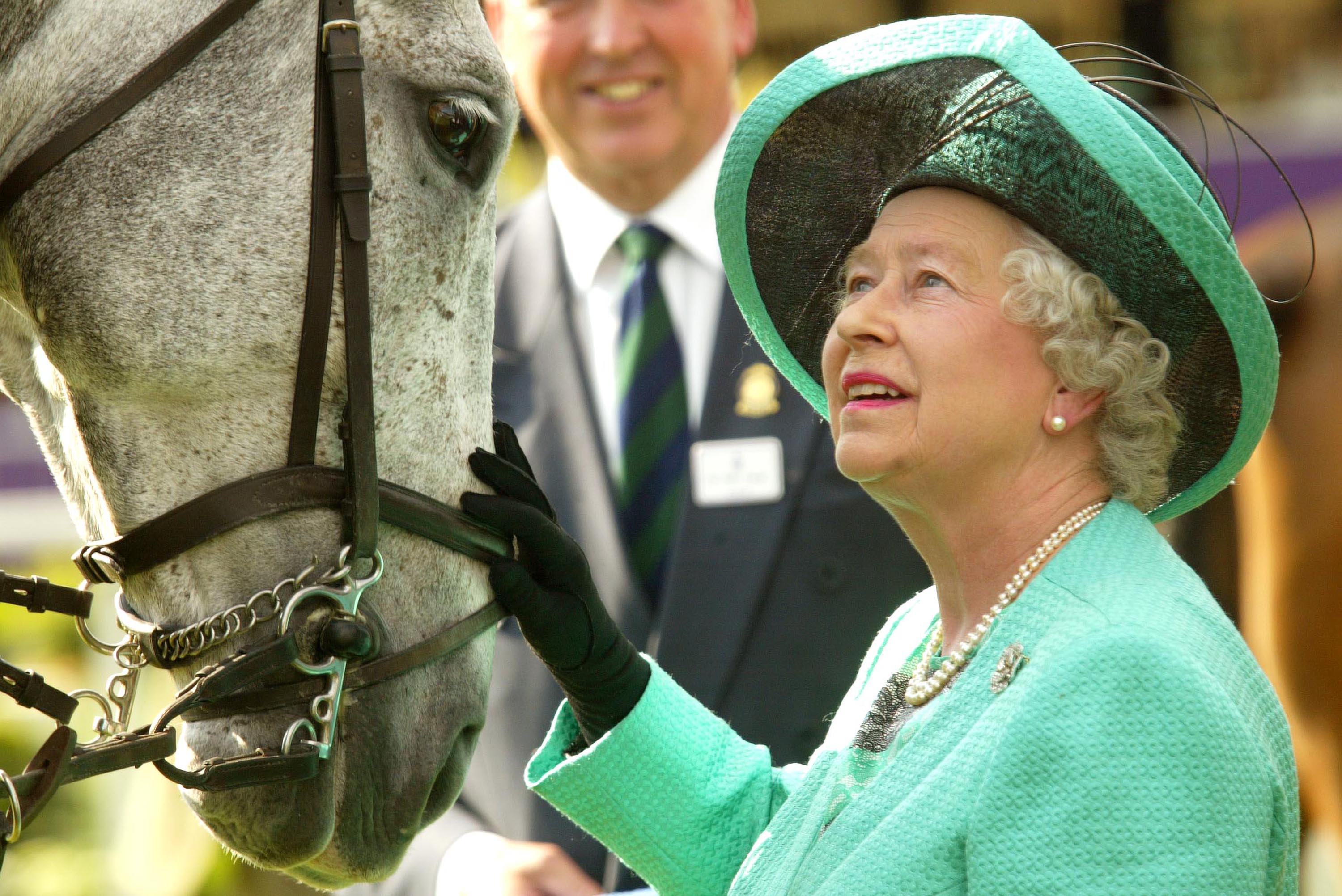
Derby Day 1953 was a bright, sunny Saturday in June. Just four days earlier the world had watched the grandeur and regal pomp of the coronation at Westminster Abbey. Now it was the chance for the young Queen Elizabeth to cast off the formality of that occasion and enjoy the trappings of the world’s greatest race day.
Her Majesty, as she is always referred to in the respectful world of racing, had a promising contender in Aureole, a flashy, headstrong chestnut and what better story could there be than the newly crowned Queen winning the Derby at Epsom?
Gordon Richards, the greatest jockey of the first half of the 20th century, had never won the Derby. He had been knighted in the coronation honours list, a timely recognition for the sportsman who had been champion jockey in all but two of the previous 27 years. The public loved him.
Before the race, as he walked into the paddock, he was stopped by the Queen. He later recalled: “She gave me that wonderful smile as she shook hands with me and said, ‘it’s all terribly exciting’. She wished me luck and I wished her luck.”
In truth, Richards didn’t need much luck. His bay colt Pinza won easily with Aureole a gallant second. Afterwards, the Queen, genuinely delighted for her newest knight, invited him to the royal box. The Duke of Edinburgh asked him if he was going to retire now that he had won the Derby. Before he had a chance to answer, the Queen interrupted: “Of course not. He is going to ride for me in the Derby next year, on Landau.”
There is no one more optimistic than a hopeful owner and the Queen was no different. Richards never rode in the Derby again – he retired the following season after a horse, ironically owned by the Queen, reared over in the paddock and left him with a fractured pelvis. Landau could finish only eighth and the Queen has never been nearer to owning a Derby winner than that very first second place.
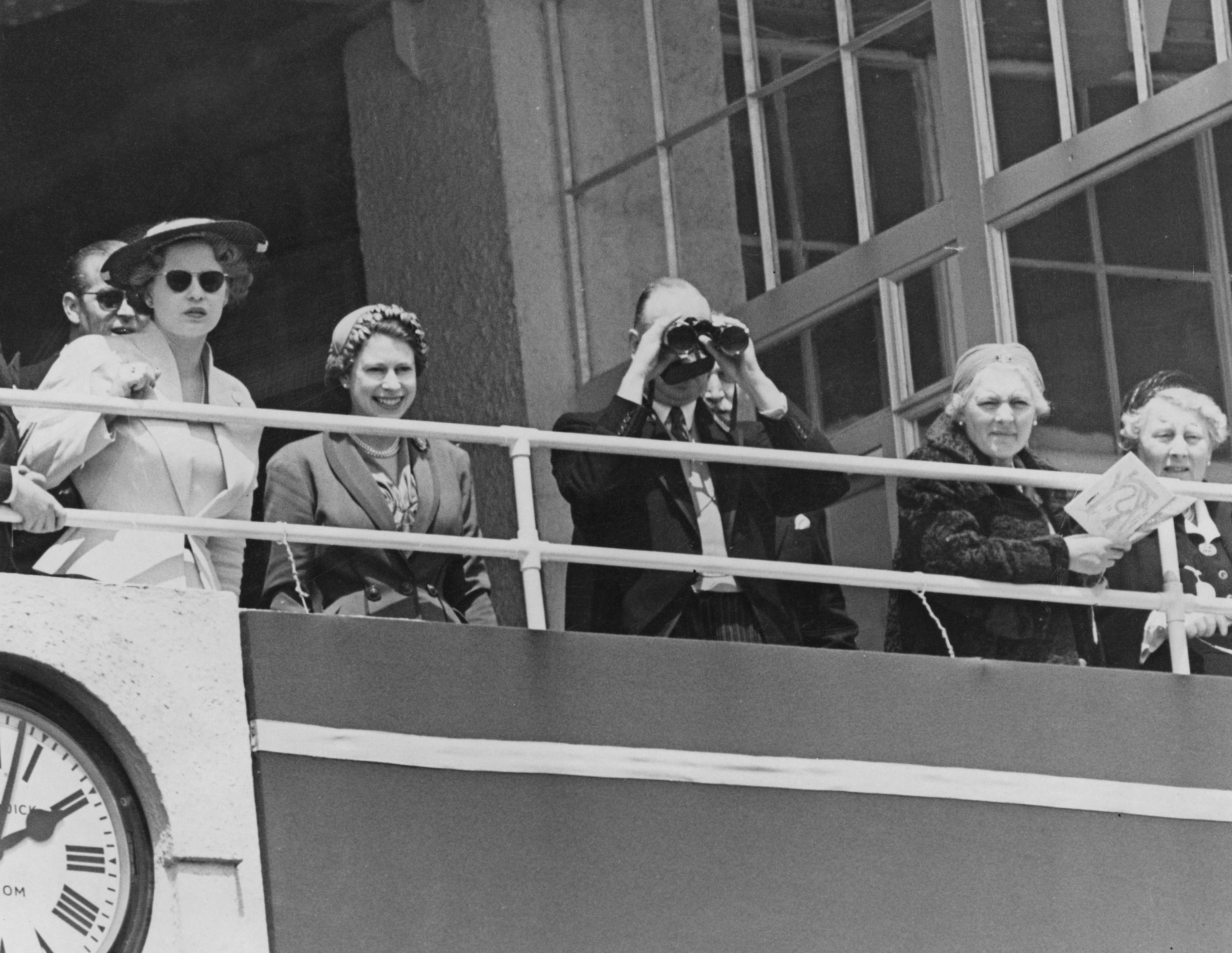
The Queen has had more than her fair share of disappointments as a racehorse owner but it’s not the winning that is most important for her. She is a natural horsewoman with a lifelong love of horses – a devotion she has never lost.
Her chief interest in life began as a little girl in the nursery when she lived with her parents at 145 Piccadilly in the years before her father became king. The future monarch would find himself having to pretend to be a horse until Princess Elizabeth was lifted into the saddle of a diminutive Shetland pony called Peggy, a gift from her grandfather, George V, on her fourth birthday. From that day on, horses have been her principal recreation and diversion from duty.
It was entirely fitting – and unsurprising – that her official platinum jubilee photographs featured the Queen with two magnificent, grey horses. The portrait harked back to one of the most beloved pictures of her life where she stands proudly next to her beloved grey pony Greylight at Windsor on her 13th birthday.
By then, the summer of 1939, she was having serious riding lessons twice a week from the famed royal riding master, Horace Smith. He was soon impressed by her blossoming skill: “She was very conscientious and anxious to improve her horsemanship. She was just as interested in the care of horses as she was in riding them, and asked me numerous questions about feeding, stable management and methods of training. She was always very fond of her ponies and never forgot to give carrots to her mount when the lesson was over.”
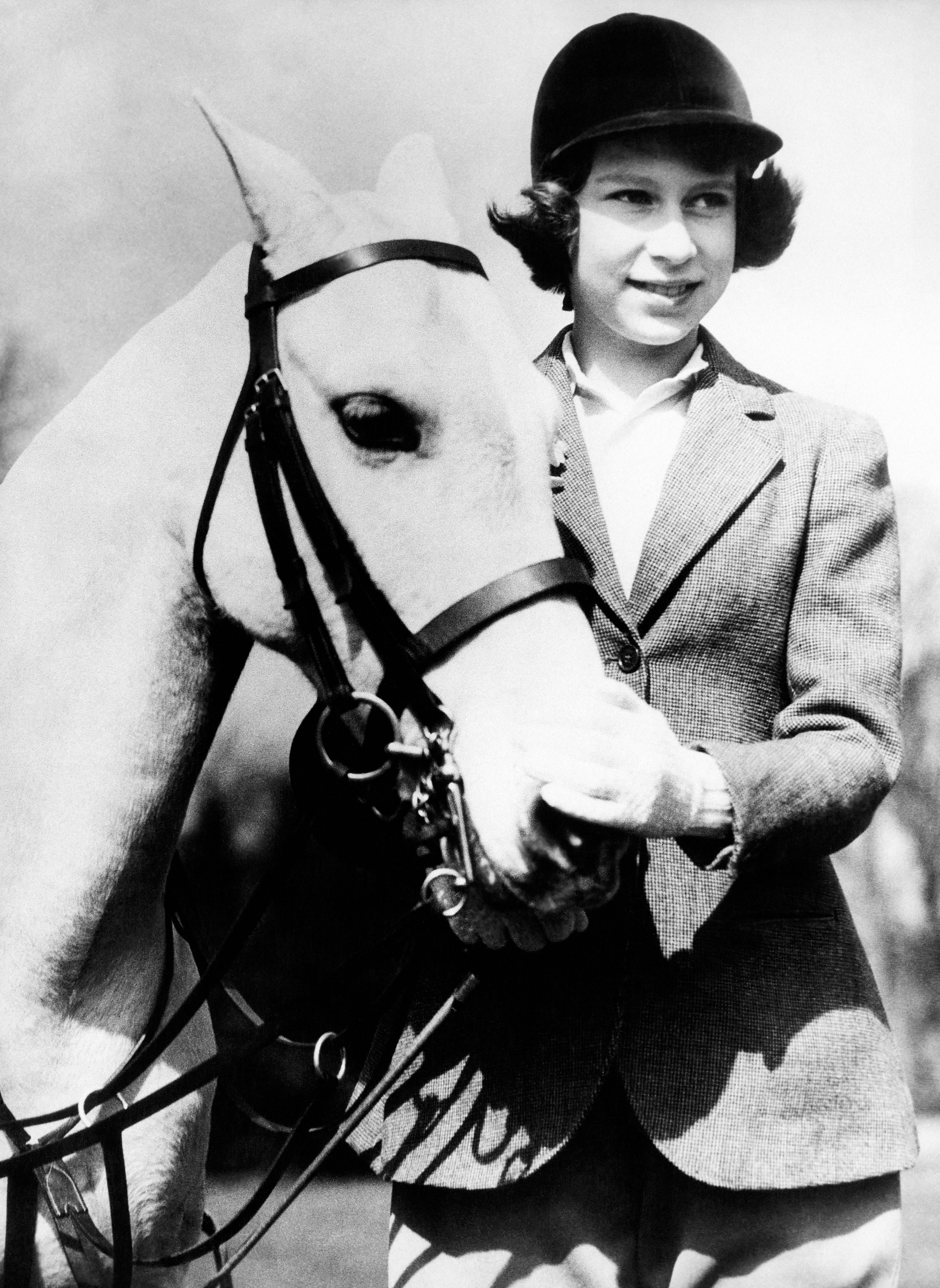
The princess even confessed to Smith that had she not been who she was, “she would like best to be a lady in the country with lots of horses and ponies”. Recalling her devotion to horses, Smith later observed, “The Queen is not, and never has been, a person who takes up interests lightly, only to drop them just as easily a short time later.”
Her natural expertise soon became legendary in racing circles. Ian Balding, father of broadcaster Clare Balding and a royal trainer for 35 years, tells the story of the day the Queen came to visit his stables and they went to watch some yearlings in a field when six or seven started galloping straight towards her. It could have been a disaster but as he later explained: “The Queen knew to stand absolutely stock-still and not bolt for the gate. I stood with her and the horses pulled up.”
As the years passed the Queen got no closer to winning the Derby. Her 10th attempt, Carlton House was favourite in 2011 but could only manage a close third
Although she was an accomplished teenage horsewoman, Princess Elizabeth had not yet been introduced to the world of horse racing. During the early stages of the war, both she and her younger sister Margaret were not seen in public, their exact whereabouts kept secret for security reasons.
Eventually, in 1942 and after much pestering, their mother and father decided to take the girls to the famous Beckhampton stables in Wiltshire to watch the two royal classic winners, Big Game and Sun Chariot, put through their paces on the gallops. Princess Elizabeth was in awe at the sight of these magnificent thoroughbreds. She was allowed to run her hand over the powerful frame of Big Game, a recent winner of the 2000 Guineas at Newmarket. She later confessed to not washing her hands for the rest of the day, so awe-inspiring was the occasion.
As a portent of future disappointments, Big Game flopped in the Derby, held during the war at Newmarket and not Epsom which had suffered considerable bomb damage. The princess was not allowed to witness the great race until June 1945 when she accompanied her parents to watch the royal runner, Rising Light, finish a lacklustre fifth.
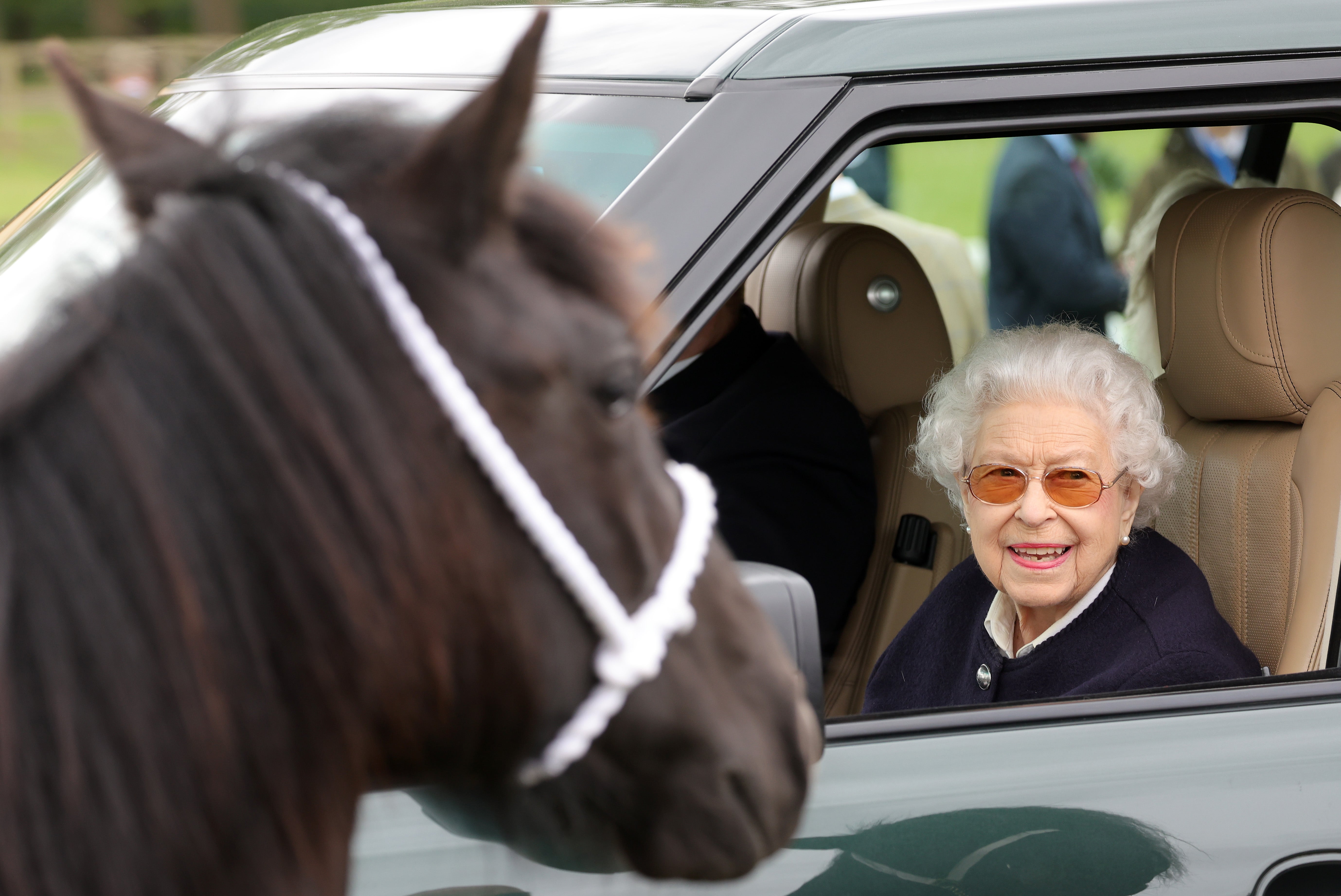
Dressed in her khaki Auxiliary Territorial Service uniform the princess followed her mother’s example and looked positively cheerful despite the disappointment. It was an early display of the correct way to behave in defeat or disaster. She joined the king and queen in the unsaddling enclosure to congratulate the winning connections and had the consolation of being cheered along with her parents all the way to their car as they left the course.
Two months later she went to her beloved Ascot for the first time, again accompanying her parents and this time enjoying the thrill of victory when Rising Light claimed a brave win. Her father had spent the morning discussing the implications of the atomic bomb with President Truman who would sanction the destruction of Hiroshima two days later.
It was time for the princess to make a trip to the races on her own, or at least as much on her own as a royal visitor can ever be at a crowded racetrack. She was at Newmarket to welcome a royal winner and, the following season, watch the same horse, Hypericum, finish first in the 1000 Guineas race at the course. She dashed down from the stands to greet the winner, an occasion memorably described by Bill Curling of The Daily Telegraph: “I can see her now standing in the unsaddling enclosure, the only woman amongst a sea of men.” The princess was a petite 5ft 3in and was stood next to the royal racing manager, Captain Charles Moore, and the king’s trainer, Captain Cecil Boyd Rochefort, both of whom were a foot taller.

Her passion for the equine world was common knowledge among the higher echelons of society and the first colt she owned was literally a gift horse – a wedding present from the Aga Khan. Disappointingly the filly, Astrakhan, only managed one very minor win but did have the distinction of being the first to carry her own personal racing colours. The familiar royal silks we know today – purple jacket with gold braid, red sleeves and a black velvet cap with a gold fringe – are the reigning monarch’s and she inherited them after the death of her father the king.
Boyd-Rochfort was kept on as the royal trainer and a trip to visit his Newmarket stables continued to be a private pleasure for the Queen, an unpublicised break from her duties. On these days the Queen would watch the horses on the gallops before joining the trainer and his family for a lunch prepared by his eccentric continental domestic staff. On one occasion the caramelised topping on a creme brulee was so hard that the Queen took off her high-heeled shoe and, to everyone’s astonishment, cracked it open with the heel.
She also had a fit of the giggles at another lunch when the dessert arrived. It was called a “Mars Bar Surprise.” The idea was that the Mars bars would be sliced and used as a topping to some ice cream. It was brought in grandly but the staff hadn’t quite got the point. The Mars bars were piled up on the ice cream still in their wrappers – which was certainly a surprise.
The Queen’s “partner in crime” at many of the best – and worst – moments in the world of royal racing was the Queen Mother, who didn’t share her daughter’s great knowledge of all things equine but was always up for the “craic”. After a particularly lean season for her mother, the Queen offered to pay her training account. The Queen Mother gratefully accepted and signed her name at the bottom of the bill. Before sending it off to Buckingham Palace she had an afterthought and wrote underneath the amount, “Oh dear!”
This year she had a legitimate contender in the well-named Reach for the Moon, but the horse has failed to recover from injury in time and will now be aimed at Royal Ascot
They shared the ownership of just one horse together – the very first the Queen Mother owned, a steeplechaser called Monaveen, which won several races before being fatally injured at the old Hurst Park course by the Thames in Surrey. The world of racing can wear a cruel coat that makes no allowance for royal ownership.
The Queen and Princess Margaret were with their mother in 1956 to cheer home Devon Loch in what would become the most famous Grand National of them all when the gallant horse floundered just a few yards from the winning post. His inconsolable jockey, the famous novelist Dick Francis, observed: “Both the Queen Mother and the Queen were obviously sorrowful and upset by what had happened.”
Ian Balding confirmed a widely held belief in racing: “Between them they have had as many disasters as it is possible to have.” He had the task for instance of telling the Queen that her brilliant mare, Example, had died giving birth, a desperate blow to the royal stud at Sandringham and to her owner who so enjoyed the strategy, planning and the progress of breeding; and then there was the morning on the gallops when there was a crack that rang out like a gunshot – her star colt Special Leave had broken a leg on a routine exercise canter.
It was not all gloom, however. The Queen happily shared perhaps her mother’s greatest racing day when Special Cargo won a thrilling renewal of the Whitbread Gold Cup in 1984. After the heroic triumph Colonel Bill Whitbread and his wife Betty held a dinner party for the Queen Mother. After an enjoyable dinner, the 11 guests adjourned to another room to watch a film of the race one more time. They were a chair short so the Queen sat on the floor.
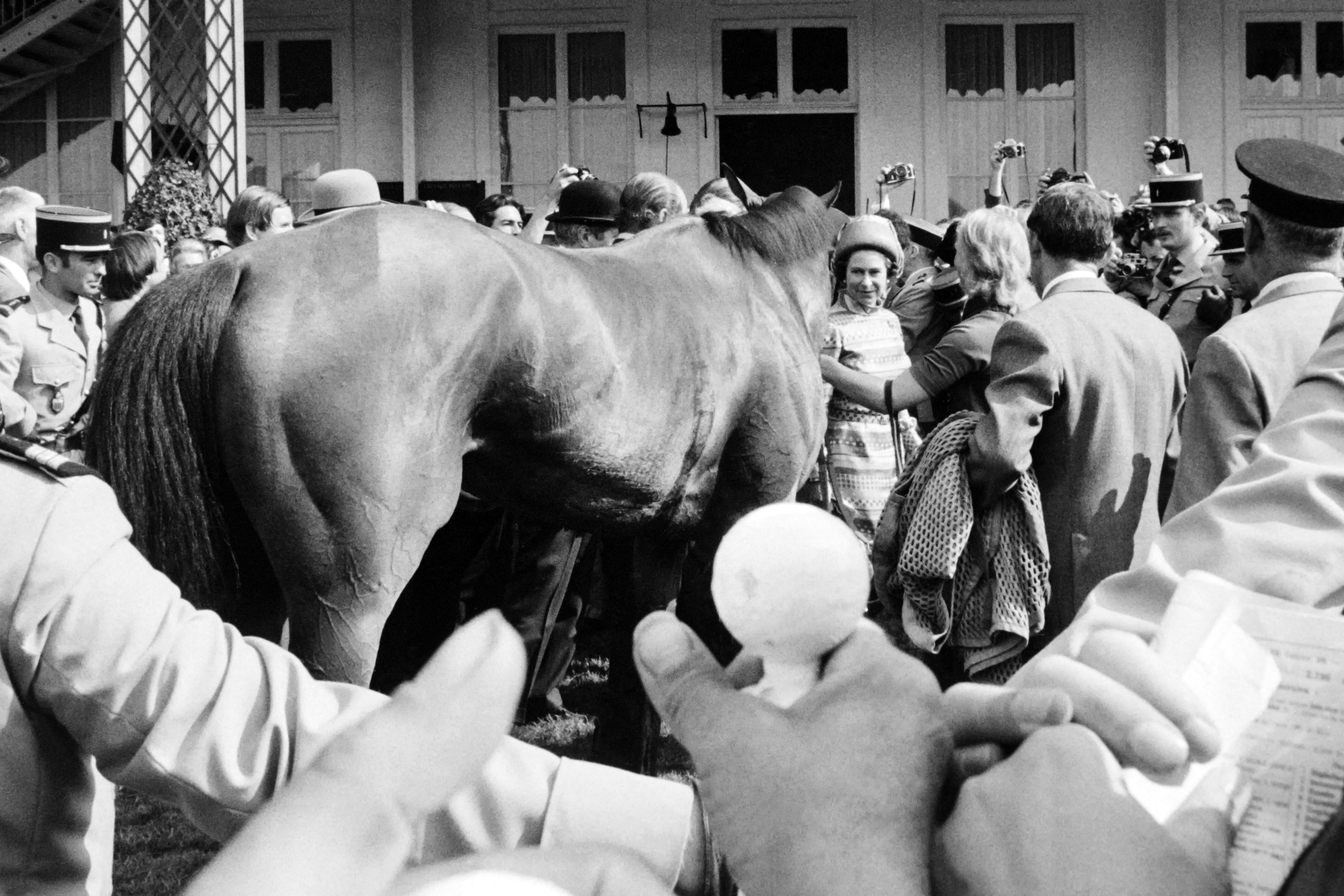
She had arguably enjoyed her own greatest triumph a decade earlier, not on the downs of Epsom or the genteel parade of Royal Ascot but in France, at the beautiful Chantilly course where the Prix de Diane, the French Oaks, was held. The president of France, Valerie Giscard d’Estaing, sent a bowl of red roses as a mark of respect and esteem to the Queen. She was driven down the course in an open-topped car to shouts of “La Reine” and that was before the race itself.
Her brilliant filly, Highclere, was ridden by Joe Mercer and won comfortably by two lengths. In the stands the Queen watched, her hands clasped together as if in prayer. On either side, her then racing manager Lord Porchester and the manager of the Royal Studs, Sir Michael Oswald, were on their feet, binoculars waving, arms aloft in an uninhibited declaration of excitement. “It was an example of how not to behave at the racecourse,” observed Oswald afterwards.
Afterwards, the two men formed a guard of honour to protect the Queen from any French backslapping: “It was a complete riot,” said Sir Michael. “The Queen was wearing a pillbox hat and all you could see of her was the hat. I was embraced by all manner of large French matrons who I had never met before in my life.”
On the flight home, Mercer and Major Dick Hern, the famous jockey and trainer of Highclere, were toasting their victory in champagne when the pilot received a message that they were to divert to Heathrow where a limousine would be waiting to whisk them off to Windsor Castle for dinner.
Dressed in scruffy jeans at the end of a long day, they were badly in need of a wash and brush up but the instruction was clear that they were to come straight to the Queen’s private quarters and not to worry about changing their clothes. It was pouring with rain but the Queen, who was not in jeans, came out to greet them in person. “Come in, my warriors!” she apparently declared.
She was joined by the Duke of Edinburgh, Princess Margaret and Lord Mountbatten and the small party went into the dining room and there on the table stood the gold cup presented to the Queen for winning the big race: “The perfect end to the perfect day,” said Major Hern.
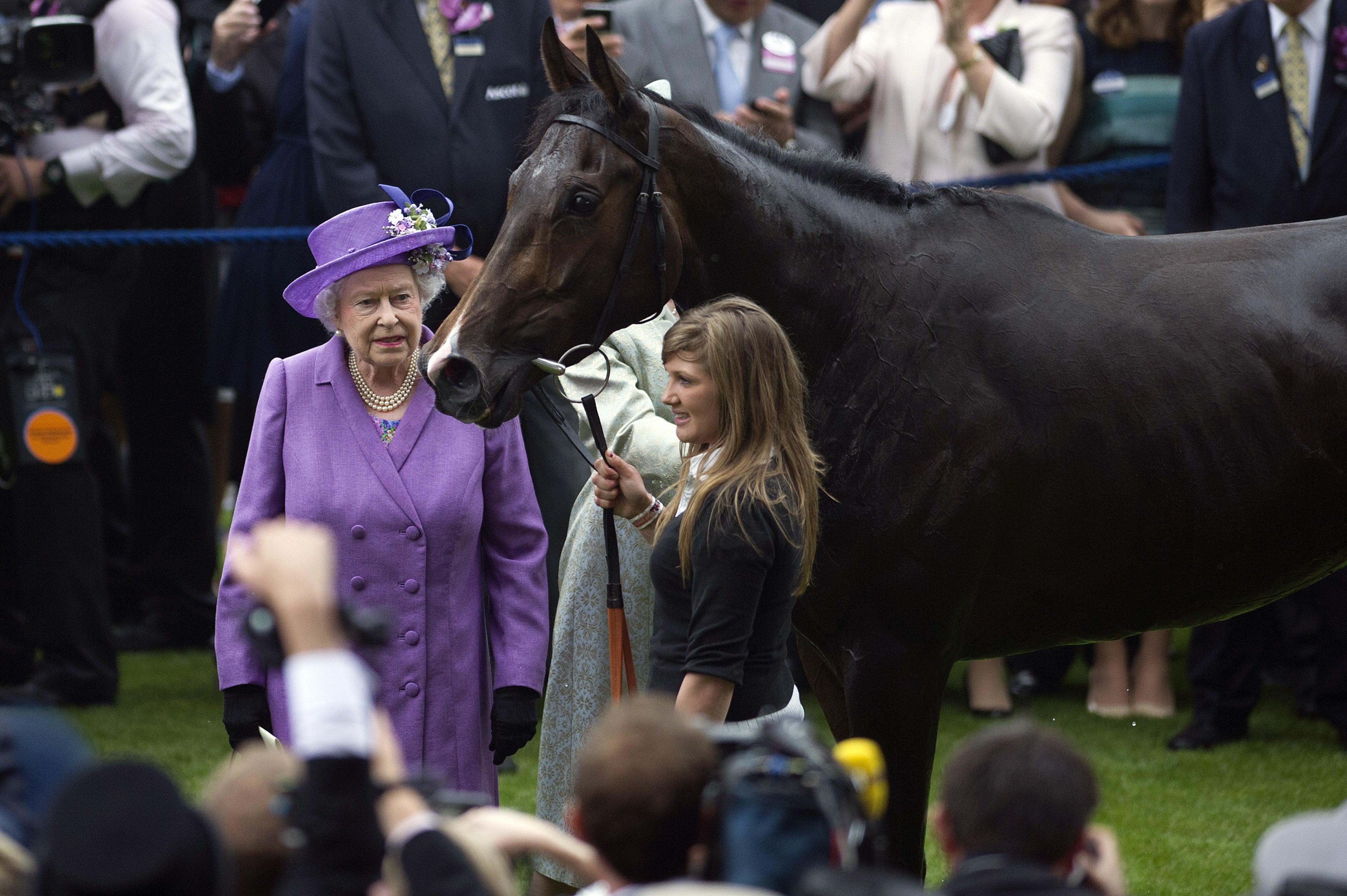
Such great days of triumph and celebration were rare because the Queen would always put her duties as the monarch first. She missed what would have been one of her best days when her filly Dunfermline won the St Leger in September 1977, the year of the silver jubilee.
She had hoped to fly down from Balmoral to Doncaster racecourse but was stuck in Scotland because the prime minister, James Callaghan, and his wife were arriving and she stayed at the castle to welcome them formally. In the end, like millions of others, she watched the drama unfold on telly.
As the years passed the Queen got no closer to winning the Derby. Her 10th attempt, Carlton House was favourite in 2011 but could only manage a close third. Her horse Estimate did manage to secure victory in the Ascot Gold Cup in 2013 which was a much-cherished win for the Queen because she loves Royal Ascot week, but the Derby continues to elude her.
This year she had a legitimate contender in the well-named Reach for the Moon, but the horse has failed to recover from injury in time and will now be aimed at Royal Ascot later this month. The Hollywood script would have included a scene of the colt flashing down the outside of the field for a thrilling victory. Alas, the real world of horses and horse racing doesn’t work like that.
Her nearest miss, Auriole, would probably have won two out of three Derbies but came across one of the best winners, Pinza, in her coronation year. Though she would love to be at Epsom on Saturday to welcome the victorious connections with a genuine smile of congratulations, it is not to be. The 96-year-old monarch is said to want to pace herself during her milestone celebrations, with her daughter the Princess Royal representing her at the racecourse instead. We are only given occasional glimpses of just how much the sport means to her. The cheers ringing out across the open-topped buses on Epsom Downs will be a sign of how much she means to the sport.




Join our commenting forum
Join thought-provoking conversations, follow other Independent readers and see their replies
Comments